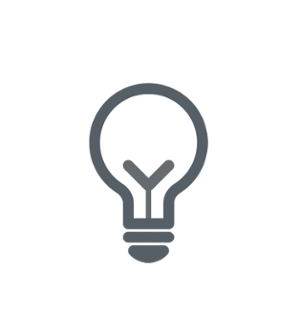6 examples of how physician recruiters can use ChatGPT
 Posted by Alexandra Cappetta
Posted by Alexandra Cappetta

As our society pioneers the early stages of what’s becoming an AI revolution, you might be considering how tools like Google BARD or ChatGPT are going to impact health care at large - and more specifically, how you’ve always recruited physicians and advanced practice providers.
There’s no denying these tools are changing the game, but it’s also important to remember they are just that: tools.
The idea of implementing artificial intelligence is new, flashy and exciting, and when used effectively, AI has the potential to simplify and speed up projects. However, it won’t ever be able to replace your abilities, efforts and human touch as a recruiter, and it doesn’t have to encroach on them either.
Think of it this way: Just because you get a new power drill doesn’t mean you toss all your screwdrivers. That just wouldn’t make sense. The same is true about AI and its role in your recruitment strategy.
With intentional and responsible use, these tools can inspire your communications and build upon your talent acquisition process in new and exciting ways. But, before we get into best uses, here are some basics to keep in mind:
- What you put in is what you’ll get out of it: "Prompt engineering" is going to be an emerging and necessary skill for those who want to get the most out of AI’s assistance developing robust, quality content. To get original and unique results, you’ll need to provide the tool with original and unique prompts. The more details, context and commands, the better - always err on the side of overexplaining.
- AI doesn’t always get everything right: These tools are advanced, but they can still make errors, misunderstand your requests or even have biases. Never blindly send or publish anything without reviewing it for clarity and accuracy.
- Reworking the content is key to standing out: Treat AI-produced content like a rough draft, not a final version. Your communications should stand apart from competitors who might be using these tools, too, and if you don’t refine the content or infuse it with your personality, how original can it really be? With your personal touch, the end result should be almost unrecognizable from what was generated for you.
With those three considerations in mind, let’s dive into six practical uses for AI programs like ChatGPT in everyday physician recruitment processes and how to get what you want from them.
6 helpful uses for ChatGPT in physician recruitment
- Developing templates
ChatGPT and similar AI tools excel when it comes to creating reusable templates you can customize, helping you more quickly crank out job postings, content for email campaigns, messages to candidates and other communications.
Your input should clearly convey your intent and what you want it to produce for it to be easily repurposed. For instance, if the goal is to create a reusable template for posting new openings at your health system, the prompt might be something like this:
Develop a job posting template I can populate with information about openings at <health system>. Please incorporate the following details about the health system: <Any major highlights you want to be sure are mentioned about the role, expectations, qualifications, or the health system, culture and teams candidates would be working with>.
- Writing suggested text for emails, job postings, descriptions, profiles and more
AI can also assist with writing content for designated uses, like specific outreach emails, individual job postings and descriptions or details on profile pages. When making these requests, try providing the tool with a list of details you want to incorporate to help it fill in the gaps.
For instance, if you wanted to send an email to a candidate following up with details about an opportunity they inquired about, your prompt might look like:
"Write a brief email from a recruiter’s perspective, replying to a physician candidate who reached out about an opening at my health system. Include these details about the opening and organization: <Job title, job description, health system and facility name, where the job is located, unique details about your organization or culture, selling points for your opportunity, etc.>"
- Drafting in-the-moment messages to candidates
Save time by asking your AI tool to generate ideas for introductory messages to send candidates at a virtual career fair, on job boards or professional social media platforms like LinkedIn.
When doing so, be direct about what you want the message to accomplish, who the recipient is and the context for sending the message. For example:
"Write a brief introductory message to a physician candidate specializing in cardiology to initiate a conversation during a mutually attended virtual career fair. Express interest in getting to know them and include a request to send times they might be available if they are interested in connecting to discuss the role."
- Outline proposals for presenting potential hires to leadership
Tools like Chat GPT can also be helpful for organizing, planning and developing proposals and tailoring them to each candidate you pitch to your organization’s key decision makers.
Simply copy and paste the contents of a physician or APP’s resume and/or cover letter directly into the tool and describe what you want it to do with the provided information. For example:
"Draft a proposal to health system leaders advocating for a physician candidate’s placement for a neurology opening. Using the provided information, include compelling details that will generate interest in their skills, qualifications and experience."
- Edit and proofread your writing
If you’re developing your own original content (which, yes, you should still be doing even if you’re starting to incorporate AI), these tools can help with that, too.
Strengthen your content and ensure it’s error free by pasting it into the tool and asking it to:
- Provide suggestions to improve a draft of your writing.
- Review your content for spelling, grammar, punctuation and flow.
- Shorten, summarize or condense your content to be under a certain character count.
- Rewrite your content in a different voice or tone or for a different purpose (ex: plug in your facility description and ask it to best market the facility in a social post or message to candidates about an opening).
- Optimize SEO for content like job postings to help get more traffic.
- Create more targeted advertisements
Tap into the marketing insights of AI by requesting unique ways to market various jobs, facilities within your organization or simply the culture of your health system.
First, tell the tool what it is you want to convey and what your endgame is - whether it’s to create an ad that contributes to sign ups, link clicks or just general branding and awareness. Then, get specific about who you’re looking to reach.
Let’s say you wanted a social media ad targeting passive physician candidates specializing in rheumatology. A potential input could be:
"Provide an example of an effective social media advertisement for openings at a <ex: physician-led, nonprofit health system> that would best reach passive physician job seekers specializing in rheumatology. Include a strong call to action that compels readers to click a link to learn more about the opportunities throughout the country."
While there’s a lot we don’t know about the future of AI and every way it’s going to be present in our lives and careers, one thing is certain: It’s here, and it’s likely only going to become more and more integrated.
Rather than shy away from what might seem like monumental changes for health care, recruitment and, really, professionals in every field, you can start familiarizing yourself with AI’s abilities and learn to harness them in ways that work for you. Plus, front lining the revolution of artificial intelligence means you’ll be among the first to define how AI’s role will elevate yours as a recruiter.

